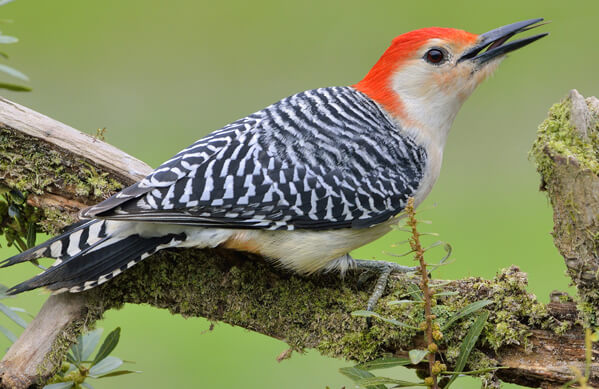Discover the Fascinating Globe of Woodpeckers: Every Little Thing You Need to Know
The world of woodpeckers is a world loaded with distinct behaviors, elaborate adaptations, and a varied range of species. From their environments and distribution patterns to their feeding habits and specialized physiological functions, woodpeckers have long astounded the rate of interest of ornithologists and nature enthusiasts alike. Recognizing the complexities of these interesting birds gives a glance right into the complicated interplay in between their biology and the setting. As we discover the globe of woodpeckers better, we reveal a wide range of info that loses light on their importance in ecological communities and the difficulties they face in an ever-changing globe.
Woodpecker Habitats and Distribution
In North America, for instance, woodpeckers can be identified in both coniferous and deciduous forests, utilizing their strong beaks to forage for pests and develop nesting tooth cavities in trees. In Africa, specific woodpecker species have actually adjusted to arid environments, such as the acacia woodlands, where they play a critical duty in managing insect populations.

Feeding Behaviors and Diet Plan
Amongst the different facets of their actions, woodpeckers show unique feeding habits and nutritional choices. These birds are primarily insectivores, with a diet that includes ants, beetles, caterpillars, and other bugs discovered in trees. Woodpeckers use their strong beaks to drill into the bark of trees, probing for insects and larvae hidden beneath the surface. In addition to insects, woodpeckers additionally eat nuts, seeds, fruits, and sap. Some varieties have actually specialized tongues with barbed pointers that aid them remove pests from gaps in wood.
Woodpeckers are understood for their drumming habits, which serves not only to connect with various other woodpeckers yet likewise to situate food. The rapid drumming sound is developed by the bird pecking on powerful surfaces like dead trees or metal posts. This actions can draw in insects concealed in the timber, enabling the woodpecker to discover their existence and feed on them.
One-of-a-kind Adjustments for Tree Climbing
In their skilled pursuit of pests concealed within tree bark, woodpeckers have evolved impressive physiological features that outfit them with special adaptations for reliable tree climbing. Among the key adjustments is their zygodactyl feet, with two toes aiming ahead and 2 aiming in reverse, offering a solid grasp on tree trunks. This customized foot plan enables woodpeckers to cling to vertical surfaces effortlessly, enabling them to relocate up and down trees with agility. In addition, woodpeckers have rigid tail plumes that serve as a supportive prop while they climb, assisting in balance and security. Their strong, chisel-like beaks are not just used for boring right into wood yet also for clutching onto bark as they ascend tree trunks. Woodpeckers have strong neck muscle mass and an unique skull framework that soak up the impact of consistent pecking, allowing them to climb up up and down without creating harm to their brains. These adjustments display the incredible evolutionary layout that makes it possible for woodpeckers to navigate trees with precision and effectiveness.
Diverse Woodpecker Variety Worldwide
With over 200 various varieties spread out throughout numerous environments worldwide, the household of Picidae includes an impressive variety of woodpeckers. These birds have a peek at this site can be discovered in forests, forests, savannas, and even urban areas, showcasing their flexibility to various settings. From the famous Northern Flicker in The United States And copyright to the vibrant and elusive Crimson-backed Flameback in Asia, each woodpecker species exhibits one-of-a-kind features in terms of tuft, actions, and environment preference.
Woodpeckers differ greatly in size, with the small Downy Woodpecker measuring around 6-7 inches in size, while the powerful Lineated Woodpecker can rise to 17 inches - Woodpeckers in Florida. Their beaks Recommended Site additionally are available in different sizes and shapes, reflecting their feeding routines. Some types focus on drawing out bugs from tree bark, like the Acorn Woodpecker, while others, such as the Black-cheeked Woodpecker, prey on fruits and seeds

Conservation Efforts and Difficulties
Conservation campaigns for woodpecker populations are critical in alleviating the effect of environment loss and other dangers facing these varied bird species. Woodpeckers face numerous difficulties to their survival, mostly as a dig this result of logging, urbanization, climate adjustment, and intrusive varieties. To attend to these issues, conservation initiatives concentrate on safeguarding and restoring woodpecker environments, applying lasting forestry methods, and increasing understanding regarding the significance of these birds in ecological communities.
One substantial obstacle in woodpecker preservation is the fragmentation of their habitats, resulting in isolated populations that are a lot more susceptible to termination - Woodpeckers in Florida. Preservationists work to create wild animals hallways and protected areas that connect these fragmented habitats, allowing woodpeckers to relocate in between different areas for feeding, breeding, and shelter

Final Thought
In final thought, woodpeckers are remarkable birds with special adaptations for tree climbing and feeding behaviors. More research and preservation actions are needed to make certain the survival of woodpeckers in the wild.